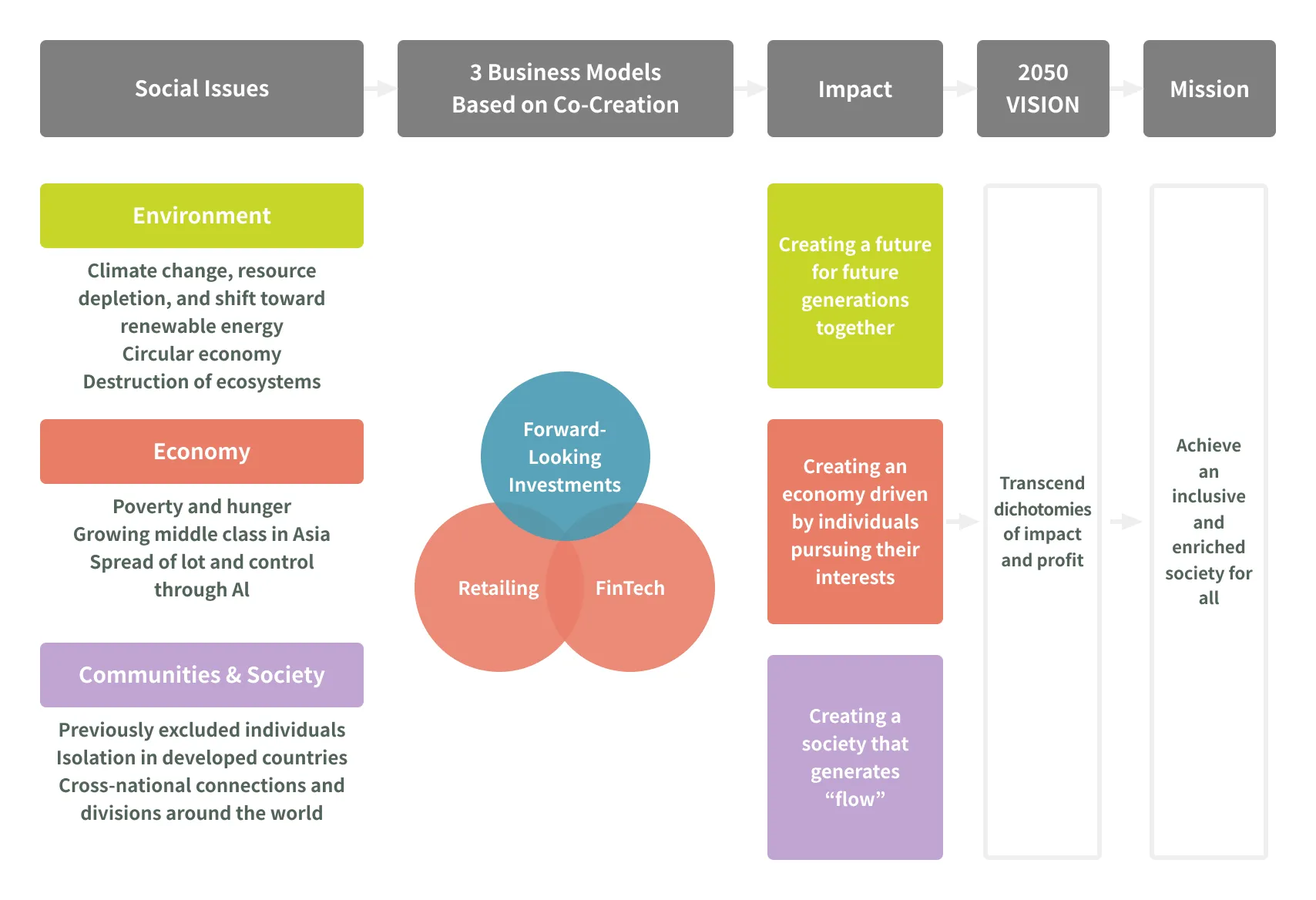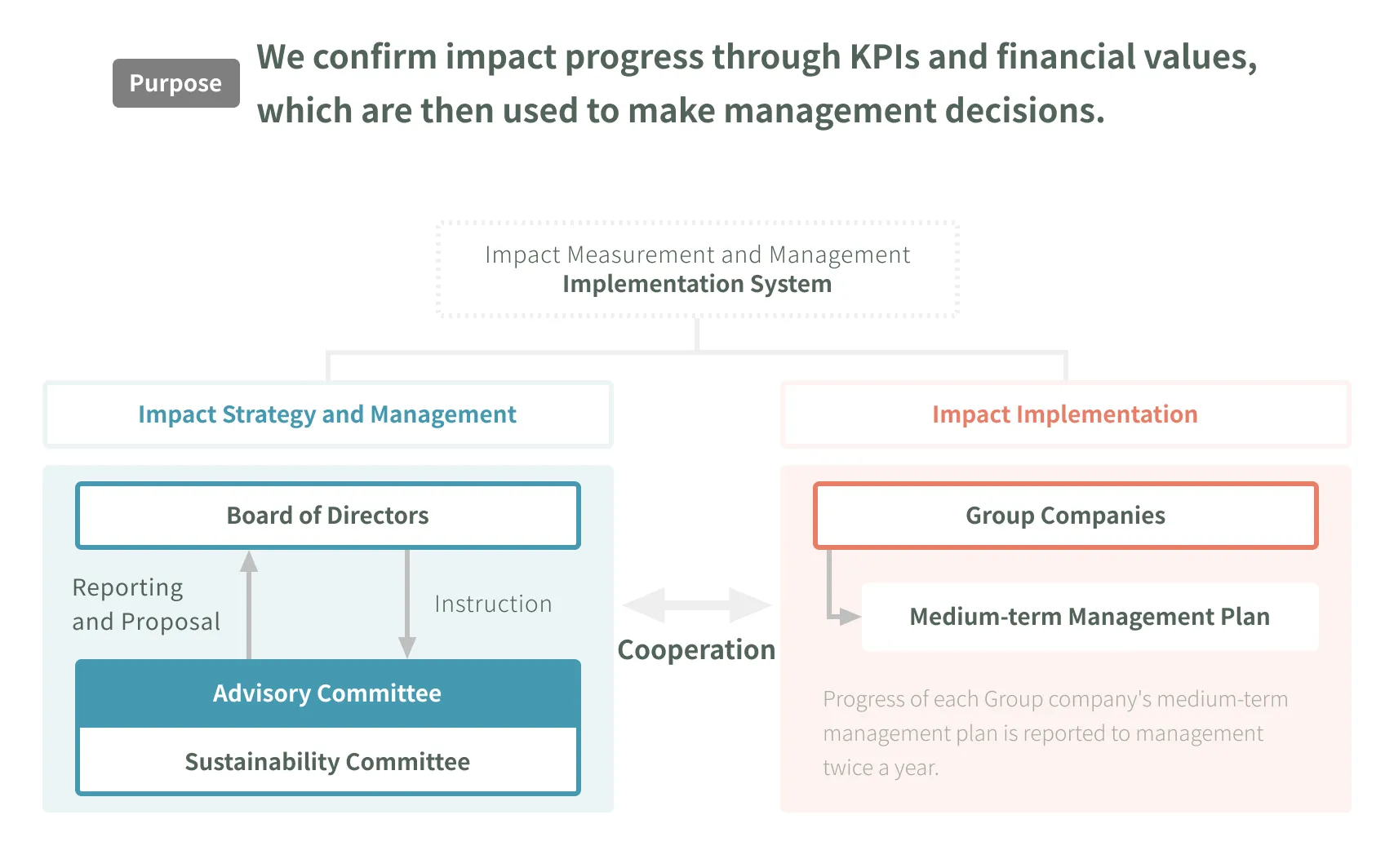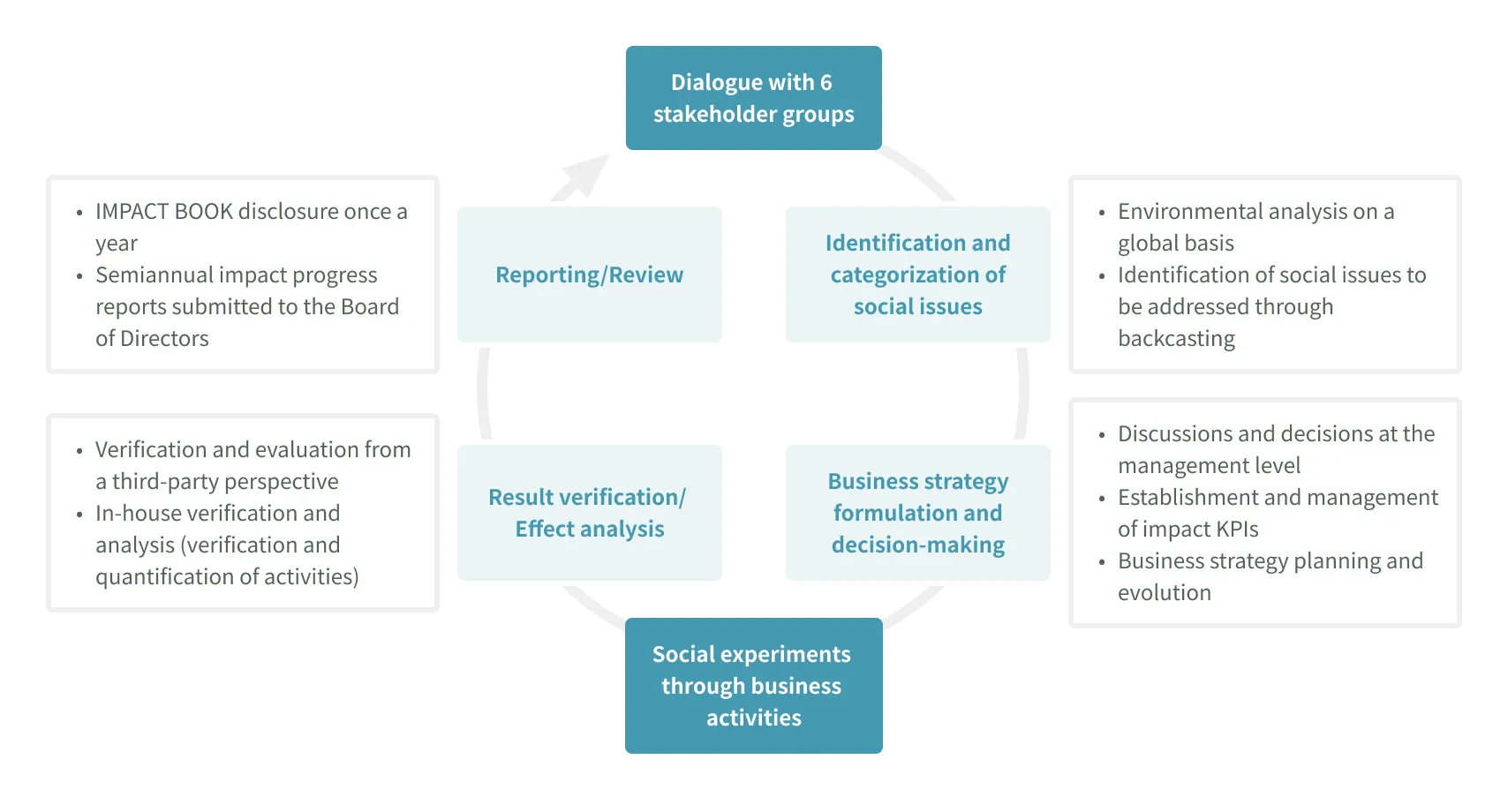Process for Establishing Core Themes
Process for Establishing Core Themes
Through the exercise of our corporate philosophy of “continue evolving to better aid our customers” and “equate the development of our people with the development of our company,” MARUI GROUP strives to fulfill its mission of contributing to the creation of inclusive society that offers happiness to all.
In short, by merging finance and retailing, the Company aspires to provide economic enrichment as well as emotional enrichment in the form of happiness and to create a society in which everyone is able to obtain this happiness.
However, this important mission cannot be carried out by the Company alone. Accordingly, an approach toward fulfilling this mission has been adopted entailing co-creation with customers, investors, communities and society, business partners, and future generations.
By engaging in such co-creation management with stakeholders, MARUI GROUP works to create harmony between the interests and happiness of all of its stakeholders while generating earnings and contributing to the resolution of social issues through its business.
Setting the Impact for Achieving 2050 VISION
Based on our mission of "Contribute to co-creating an inclusive society that offers happiness to all," we have set impact targets from our three business models based on co-creation, which is retail, fintech, and forward-looking investments.

Impact 2.0
In conjunction with the revision to our articles of incorporation, we updated the impact targets we announced in 2021 to create the new impact targets 2.0.
These updated impact targets indicate the path we will take toward exercising our corporate philosophy and fulfilling our mission.
| Themes | Priority Measures |
|---|---|
| Creating a future for future generations together |
Help realize a carbon-neutral society
|
|
Support future generations to "create businesses"
|
|
| Creating an economy driven by individuals pursuing their interests |
Consumption that expands to support individuals through their interests and society
|
|
Financial empowerment to support peoples’ interests
|
|
| Creating a society that generates worker's “flow” |
Venues for co-creation open to those both inside and outside the Company
|
|
People and work styles that manifest creativity
|
2030 Impact KPIs and Financial KPIs
We will also set impact KPIs and financial KPIs to quantitatively monitor progress and achieve both impact and profit.
| Themes | Priority Measures | 2030 Impact KPIs | Financial Value |
|---|---|---|---|
| Creating a future for future generations together |
Help realize a carbon-neutral society
|
Reduction of CO2 by the Company, society, and individualsOver 1 million tons
|
|
|
Support future generations to “create businesses”
|
Support for the creation of business for future generations
(social intrapreneurship)Over 5,000 cases |
Over ¥10
billion in transactions |
|
| Creating an economy driven by individuals pursuing their interests |
Consumption that expands to support individuals through their interests and society
|
Users of financial services that connect with society through their interestsOver 1 million people
|
Over ¥300
billion in transactions |
|
Financial services that connect with society through interestsOver 100 services
|
|||
|
Financial empowerment to support peoples’ interests
|
Users of financial services for young people, foreign nationals, etc.10 million people
|
Over ¥5.7 trillion
in transactions |
|
|
Financial services that support diverse work stylesOver 10 services
|
|||
| Creating a society that generates worker's “flow” |
Venues for co-creation open to those both inside and outside the Company
|
Number of occasions for co-creation with outstanding talent from around the worldOver 500 times
|
¥7 billion in Co-creation investment contribution margin
|
|
Number of new businesses created through co-creation20 businesses
|
|||
|
People and work styles that manifest creativity
|
Percentage of employees who are able to easily enter a state of flow60%
|
Over 70% in Intangible asset ratio
|
|
|
Percentage of employees who are making use of their interests in their work75%
|
Impact Measurement and Management System
The Sustainability Committee and the Board of Directors will implement impact strategy and management, and the operating companies responsible for implementation will collaborate in impact measurement management with the aim of confirming impact progress through KPIs and financial values, which are then used to make management decisions.

Cycle of Impact Measurement and Management
Through social experiments through business activities and dialogue with 6 stakeholder groups, we identify our impact and implement cycles for improvement.




